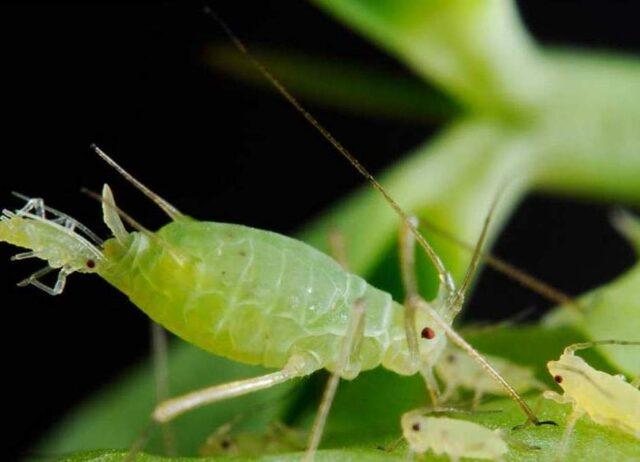Content
It is preferable to grow thyme in open ground through seedlings. It is important to choose the right location and seedlings, plant the thyme correctly, and provide it with comprehensive care and protection from diseases and pests. The culture is propagated in different ways.
When to plant thyme in open ground
It is better to grow thyme in the garden through seedlings. Seeds are sown in mid-May. Seedlings are moved into open ground in the second half of May, in the south - possibly earlier. By this time the soil should warm up to 15 °C.
It is permissible to plant thyme in open ground in the fall. In this case, the seedlings must have a well-developed root system and must be covered for the winter.
How to grow thyme (thyme) in the country
Growing thyme in open ground is not difficult. It is important to choose the right planting material, place for it, and organize comprehensive care.
Selection of seedlings
To grow thyme herb in the open ground at the dacha, either grow seedlings yourself or buy ready-made ones. Seedlings should be approximately 70 days old when planted.When choosing a material, the following points are important:
- healthy and elastic root system without cuts, broken or exposed areas;
- no signs of disease or pest damage;
- leaves are green, too dark a color indicates excess nitrogen;
- stems without spots, kinks, cracks;
- the soil is moderately moist;
- when the root system is open, the soil is fresh and crumbles when shaken; yellowing and dried skin indicate that the seedlings are not fresh.
Seedlings are purchased immediately before planting in open ground. It is not recommended to keep them for more than a day.

When choosing thyme seedlings for open ground, be sure to take into account the variety - the height, color of flowers and leaves, and frost resistance depend on it
Selecting a location
Thyme should be grown in open ground in a sunny place. Light partial shade is acceptable. When choosing a location, the following points are also important:
- the soil is fertile, drained;
- sandy loam or loam is better;
- reaction neutral or alkaline;
- deep groundwater;
- protection from strong winds and drafts.
Soil preparation
To plant thyme on the site, you need to properly prepare the place for it. They do this in the fall:
- Remove weeds and plant debris.
- Dig up the selected area.
- Add potassium-phosphorus complex and rotted manure (can be replaced with compost).
- If the reaction is acidic, add lime.
- Loosen the area
In the second half of April, the digging is repeated, removing weeds and breaking up clods. It is effective to add 20 g of urea per 1 m².
Landing rules
Planting thyme in open ground is not difficult. Algorithm:
- Loosen and level the previously dug area.
- Make planting holes. Orient the depth to the size of the root system of the seedlings, leaving 30-40 cm between plants.
- Organize drainage. Pebbles and river sand will do.
- Move the seedlings into the holes along with a lump of earth.
- Cover the plants with soil and compact.
Immediately after planting thyme in open ground, create a layer of mulch. Dry peat is well suited for this. It remains to water the seedlings abundantly.

It is better to plant thyme in open ground after vegetables; it is not recommended to grow it in one place for more than five years
How to care for thyme in the country
Thyme is easy to care for. When grown in soil, a standard set of measures is required.
Watering
In rainy summers, thyme in open ground does not need to be watered. The rest of the time, thyme is moistened as needed. Watering should be increased more frequently during flowering so that it is abundant and long-lasting. Twice a week is enough.
Top dressing
When growing thyme in open fertile soil, fertilizing is practically not needed. It is enough to apply urea in the spring, starting from the next year after planting. You can use ammonium or ammonium nitrate.
During flowering, it is useful to feed thyme with a potassium-phosphorus complex. Potassium salt and superphosphate are suitable.
Trimming
This stage of care for thyme is optional, but recommended to maintain decorativeness. The bushes will be more compact and denser if you shorten them by 2/3 in early spring without affecting the woody part of the shoots. Dried, frozen branches should be removed. Thyme in open ground is also pruned at the end of summer, when flowering has ended.
Loosening
For thyme in open ground, the condition of the soil is important, which inevitably settles over time. It should be loosened regularly. It is better to do this after watering or rain. Loosen the soil carefully so as not to damage the shoots and roots. This stage of thyme care should be combined with weeding.
Wintering thyme in open ground
How successfully thyme overwinters in open ground depends on its type and variety. The most common creeping thyme has a frost resistance zone of four, so it can withstand temperatures down to -34.4 °C. For such thyme, wintering in open ground in the Moscow region is possible without shelter. In the conditions of the Urals one cannot do without it. In the north, thyme is prepared for winter as follows:
- Water in the second half of October, when frost has not yet set in.
- Organize a shelter from cardboard, lutrasil, peat or fallen leaves.
- At the beginning of May, remove the insulation.
For some types of thyme, shelter for the winter is mandatory. Lemon thyme can only withstand temperatures down to -18 °C, so without protection it will simply die.
Diseases and pests
Thyme has good immunity, but it does not completely eliminate the risk of disease and pests. If there is an excess of moisture, thyme in open ground can suffer from fungus. The plant will wither and rot. Fungicides are used for control:
- Bordeaux mixture;
- Fundazol;
- Horus;
- Topaz;
- Strobe;
- Speed;
- Abiga Peak;
- Fitosporin;
- Topaz;
- Ridomil.

One of the possible fungal diseases of thyme in open ground is rust.
Among the pests, thyme in open ground can suffer from the meadow moth. They fight it with drugs:
- Lepidocide;
- Dendrobacillin;
- Bitoxibacillin;
- Fitoverm.

Thyme in open ground is damaged by caterpillars of the meadow moth, spoiling the leaves, stems, and flowers of the plant.
Another enemy of thyme in open ground is the sand slugger. The beetle itself and its larvae damage thyme, especially in the first half of May. Control measures are as follows:
- regular weeding, destruction of plant residues;
- drugs – Bazudin, Diazinon.

Sand borer can harm not only thyme, but also various crops - legumes, pumpkins, cereals
Thyme in open ground can suffer from aphids. Pest control measures:
- drugs – Biotlin, Tanrek, Aktara, Confidor, Corado;
- folk remedies - spraying with soap solution, infusions of ash, tobacco, zest, hot pepper, onion.

Aphids feed on plant juices and transmit diseases
Another enemy of thyme in open ground is the weevil. They fight it using different methods:
- drugs – Actellik, Karbofos, Metafos, Fufanon, Decis;
- manual collection and destruction;
- folk remedies - a solution of laundry soap, mustard, ash, infusion of tansy, wormwood.

Weevils eat different parts of the plant and lay larvae in the buds
Reproduction
Thyme can be propagated in different ways. The seed method is often chosen because it is the most effective and safe.
Seeds
You can buy thyme seeds for planting in open ground or prepare them yourself. They are collected in September, when flowering ends. Seeds are planted in the spring, but autumn sowing is also acceptable.
To obtain seedlings proceed as follows:
- Immerse the seeds in warm water for 12 hours, then dry.
- Fill the containers with soil mixture - a combination of peat and sand is suitable.
- Mix dried thyme seeds with clean river sand.
- Distribute the seed over the soil.
- Sprinkle with sand.
- Moisten with a spray bottle.
- Cover with film or glass.
Caring for thyme seedlings involves regular moistening and ventilation. After 70 days, the seedlings are moved into open ground to a permanent location.
Cuttings
It is easy to propagate thyme in open ground by cuttings. This method is available throughout the growing season. The algorithm is simple:
- Cut the stem into 5 cm cuttings.
- Bury the workpieces in the greenhouse. You can plant them in open ground, but cover them with a jar or film.
- Moisturize regularly but moderately.
Rooting of thyme cuttings takes 2-3 weeks. Then the thyme can be planted in open ground in a permanent place or left, removing the shelter.
Dividing the bush
Dividing the bush is used less frequently because it is traumatic for thyme. This method is used in early spring. The bush is dug up, divided into two parts and planted in a new place. The advantage of this method is the rejuvenation of the plant.
Conclusion
Thyme is easy to grow in open ground. It is better to plant it as seedlings; it can be propagated by seeds, cuttings or dividing the bush. Thyme needs comprehensive care, including moderate watering, fertilizing, and pruning. In some cases, shelter for the winter is required.








